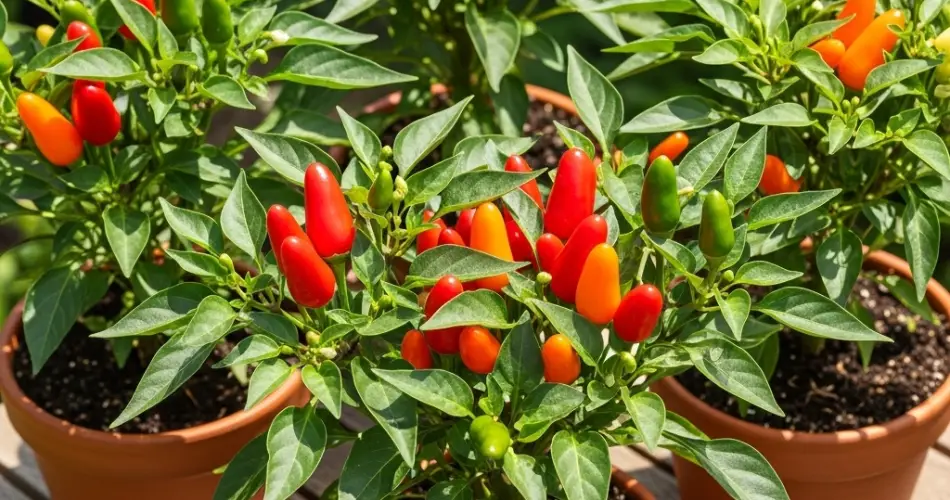If you love the fiery kick of chili peppers but think you need a sprawling garden to grow them, think again. Chili peppers thrive in pots and small containers, making them a perfect choice for balconies, patios, windowsills, or even sunny indoor spaces. With minimal effort and a few basic supplies, you can harvest flavorful, homegrown heat from just a single plant in a pot.
Chili peppers are not only decorative with their vibrant red, orange, and green fruits—they’re also incredibly rewarding for both beginner and experienced gardeners. Whether you’re after mild jalapeños or fiery Thai chilies, container growing makes it easy to cultivate the spice you love, even with limited space.
Why Grow Chili Peppers in Pots?
Growing chili peppers in containers is practical for many reasons:
-
Space-saving: Perfect for apartments, balconies, and compact outdoor spaces.
-
Mobility: Easily move the pot to adjust for better sunlight or protect from bad weather.
-
Pest and disease control: Containers reduce exposure to soil-borne diseases.
-
Soil management: Use customized soil mixtures for optimal growth.
Plus, growing chilies in pots gives you a steady supply of fresh, organic peppers for cooking, pickling, and drying.
Choosing the Right Container
The success of chili pepper plants depends largely on choosing the right pot. Peppers have deep roots and need plenty of space to flourish.
Recommended container features:
-
Size: At least 8–10 inches deep for small varieties; 12–16 inches for larger types.
-
Material: Plastic, terracotta, fabric grow bags, or ceramic—all can work if they have good drainage.
-
Drainage: Ensure the pot has multiple holes at the base. You can elevate the pot slightly using a stand or bricks to prevent water pooling.
Each pot should hold one plant to ensure proper airflow and root development.
Best Chili Varieties for Containers
Not all chili peppers grow the same. When growing in small spaces, it’s best to choose compact or medium-sized varieties.
Great choices for pots:
-
Thai Hot – Small plant, extremely productive, very spicy.
-
Cayenne – Slim red peppers, ideal for drying or fresh use.
-
Jalapeño – Mild heat, easy to grow and great for stuffing or pickling.
-
Habanero – Compact plant with fruity, fiery heat.
-
Bird’s Eye – Perfect for containers, small and prolific.
You can also experiment with ornamental chili varieties, which are both attractive and edible.
Soil Preparation
Chilies prefer slightly acidic, fertile, and well-draining soil. A lightweight potting mix enriched with organic matter is ideal.
DIY potting mix for peppers:
-
50% good-quality potting soil
-
30% compost or worm castings
-
20% perlite or coarse sand for aeration
Mix in a slow-release fertilizer before planting, or plan to feed regularly with liquid fertilizer as your plant grows.
Planting and Positioning
Chilies can be grown from seeds or seedlings. If starting from seed, begin indoors 6–8 weeks before your last frost date.
-
Fill the pot with your soil mix, leaving about 1–2 inches at the top.
-
Transplant one seedling per pot when it has at least 4–6 true leaves.
-
Water well, ensuring the excess drains out.
Place your pot in a spot that gets at least 6–8 hours of direct sunlight daily. A warm, sunny location is essential for flowering and fruit development.
Watering and Fertilizing
Peppers don’t like wet feet, but they also won’t tolerate completely dry soil. Consistent watering is key.
-
Water when the top inch of soil feels dry, usually every 1–2 days during hot spells.
-
Avoid waterlogging—always empty drainage trays to prevent root rot.
-
Feed every 2–3 weeks with a liquid fertilizer high in potassium once flowering begins.
Chilies also benefit from occasional applications of compost tea or diluted seaweed extract to boost root strength and fruit set.
Supporting Your Plants
Some pepper varieties produce heavy fruits that can weigh down branches. Support your plant with small stakes or cages to keep it upright.
Pruning the growing tips can encourage a bushier shape and more branching, which may lead to a larger harvest in a compact form.
Pest and Disease Management
Though container-grown chilies are generally less susceptible to pests, watch for:
-
Aphids – Use neem oil or insecticidal soap.
-
Spider mites – Spray with water and ensure good airflow.
-
Fungal issues – Avoid overhead watering and maintain good drainage.
Inspect your plant regularly to catch any signs of trouble early.
Harvesting Chili Peppers
Chilies can be harvested once they reach full size and color, depending on the variety.
-
Use scissors or garden shears to snip peppers off gently.
-
Pick regularly to encourage more fruit production.
You can harvest green peppers for milder flavor, or wait until they ripen fully on the plant for maximum heat.
Final Thoughts
Chili peppers are a rewarding and easy crop to grow in pots—even in tight spaces. With the right container, sun exposure, and care, you can enjoy a vibrant harvest of spicy goodness from just a balcony or window.
From fresh salsa to homemade chili flakes, your potted pepper plant can bring fiery flavor to your meals all season long. Whether you’re a casual cook or a heat-seeking foodie, a homegrown chili pepper plant is the perfect addition to your small-space garden.



